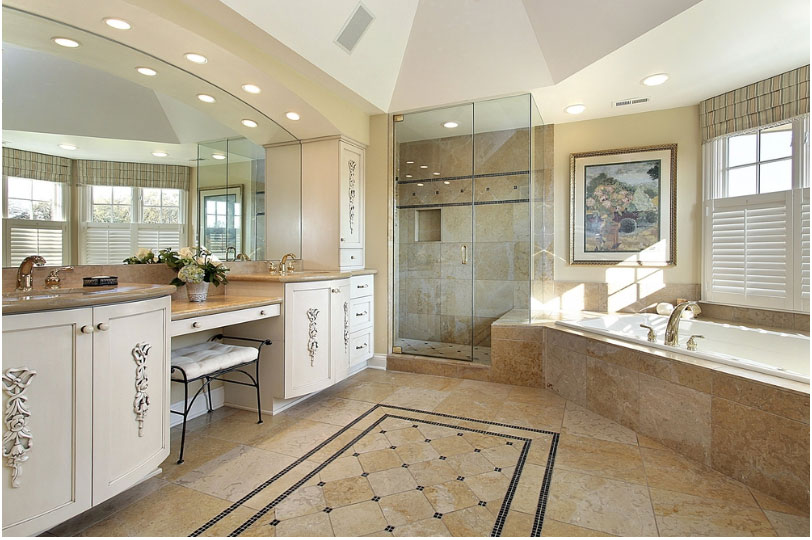Flooring Types and Their Ideal Rooms in the House
Flooring installation is one of the renovation phases where it pays to spend some extra time considering all the angles of the material options available to you. Of all elements in your house, flooring is probably going to suffer through the most wear and tear because there’s no way you can make light use of it. Someone is always going to run late and scuff it up; something is bound to get dropped or spilled on it; kids will somehow find creative ways to decorate it with their boundless imagination.
Because of people’s diverse foot traffic needs, there’s a lot of different types of flooring to choose from. A good way to help narrow down the choices is to look at some of the most common flooring types and determine which rooms in the house they’re most suited for:
Carpet
Carpet is the most bare-feet-friendly of all the flooring types. It’s soft and feels warm between your toes, especially in the morning when you finally work up the courage to crawl out of your warm bed. It also makes a room feel more cozy and inviting. Just don’t install carpets in moisture-rich and spill-prone areas. They’re ideal for:
- Bedrooms
- Kids’ Playroom
- Living Room
Hardwood, composite wood, or laminate
Hardwood is made from the timber of hardwood trees and has a long lifetime since it’s very durable with a surface that can be refinished periodically to hide accumulated scratches. Composite wood is a cheaper alternative to hardwood and doesn’t last as long since it’s actually made of layers of compressed wood particles sealed with a hardwood finish on top. Laminate is a synthetic material with a resin-and-fibre core that’s often used to simulate hardwood flooring by laminating its pattern on top. Again, all of these materials don’t hold up well in wet areas so they’re better suited for:
- Bedrooms
- Dining Room
- Hallway
- Living Room
- Office
Stone or ceramic tile
Stone tiles are hewn from natural stones such as granite, marble, limestone, and slate. It’s an expensive but highly durable luxury flooring that requires sealing after a labour-intensive installation. Ceramic tiles are made from glazed ceramic that’s just as durable and not as costly. Stone and ceramic tiles bring a touch of class to the house, but are not very comfortable to walk with bare feet since they’re always cold to the touch and slippery when the floor is wet. Both issues can be solved though if you get tiles with a textured, non-slip surface and put in radiant heating under tiles installed in wet areas; that way, you’ll always have sure footing on a heated tile surface that quickly dries up any small puddles that were missed. Both tile types are easy to clean (though stone tiles do take a little more work with regular sealing needed) and are best for high-traffic, wet, and dirt-prone areas or areas where you want to show them off as key design features. Install them in:
- Atrium/Entranceway
- Basement
- Bathroom
- Dining Room
- Kitchen
- Living Room
Vinyl
Vinyl is made from a synthetic polymer material that produces a resilient, rubbery surface that can absorb a lot of impact from non-sharp objects. Any dents from sharp objects can be removed by simply replacing the damaged tile since vinyl tiles are very easy to install. It’s also easy to clean and is water-resistant. The material vinyl is made from though means there’s a risk of it releasing volatile organic compounds (VOCs) over time, which adversely affects air quality; if that doesn’t bother you, it’s a low-cost flooring type that’s good for:
- Basement
- Bathroom
- Dining Room
- Kitchen
- Laundry Room
Bamboo or cork
Both bamboo and cork flooring are made from sustainable, renewable materials so they’re great if you’re looking for eco-friendly flooring options. On top of that, they’re both extremely durable – just as tough as hardwood floors, if not more. Cork even has a little bounciness to its surface, which allows it to absorb impact and makes it more pleasant to walk on. Similar to hardwood, both materials are not recommended for wet areas. Bamboo is a little more water-resistant since it’s a type of grass that thrives in water so it can be installed in slightly humid area like the basement; it will suffer water damage though if large puddles are not mopped up right away. Bamboo and cork are ideal for:
- Basement (bamboo only)
- Bedrooms
- Dining Room
- Kids’ Playroom (cork only)
- Kitchen
Narrowing down flooring options based on practicality is a good starting point. Some flooring types are easy to install and can be DIY projects, but if you decide on higher-end flooring types, always get a professional from your general contractor’s team to do it so that they’re installed properly and without risk of potential damage.






